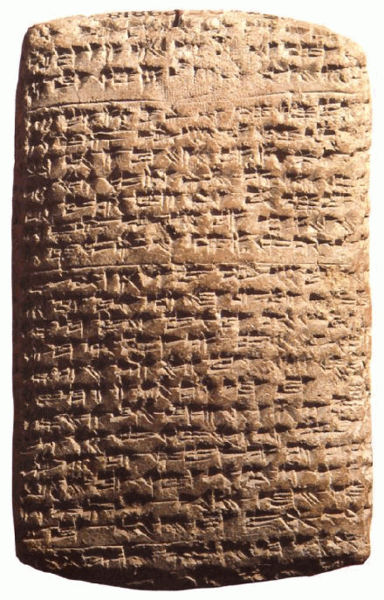2 Sam 8:1-18 Over the next few years, David defeats the Philistines, the Moabites, the Syrians of Zobah, the Arameans of Damascus, and the Edomites in the Valley of Salt (the Jordan Valley near the Dead Sea). His kingdom and vassal states now stretch to the River Euphrates.
2 Sam 9:1-13 David cares for Mephibosheth, the only remaining son of Jonathan.
2 Sam 10:1-19 David defeats the Ammonites at Rabbah (modern-day Amman) in c.999BC and the Arameans under Shupak at Helam in c.998BC.

Temple of Hercules at Rabbath-Amman citadel (Dennis Jarvis)
David’s victories
King David is often looked upon as the most successful military conqueror in the history of the Israelite nation. By the end of his reign in c.971 BC, the boundaries of Israel (and the neighbouring vassal kingdoms who paid tribute to David) stretched across the Fertile Crescent from the Wadi of Egypt to the River Euphrates.
The success of David’s military campaigns, however, was due not only to his own charismatic and capable leadership, but also reflected the weakness of his neighbours at that point in history. David came to power as king of the southern territory of Judah in c.1011 BC (see 2 Samuel 2:1-4), at a time when the Philistines, Israel’s traditional enemy, were in decline. The previous year, Saul’s son Jonathan had toppled the standing stone (the ‘netsib’) at Geba that stood there to proclaim Philistine supremacy over the area (see 1 Samuel 13:3). This was followed by the rout of the Philistine forces at the Battle of Michmash Pass (see 1 Samuel 14:1-23).
David had served as a mercenary soldier for the Philistine king of Gath (see 1 Samuel 27:2-4), so when King Saul was mortally wounded by the Philistines at the Battle of Gilboa (see 1 Samuel 31:1-6), the Philistines were happy to support David’s claim to the throne of Judah and establish him there as a vassal king. In the event, it took seven years of fighting for David (who had been anointed King of Judah) to defeat Saul’s son Ishbosheth and establish the United Monarchy of Israel and Judah in c.1004 BC (see 2 Samuel 2:8-11, 3:1-39 & 4:1-12).
Having become king over all the tribes of Israel, David quickly consolidated his position by capturing the Canaanite city of Jebus (Jerusalem) from the Jebusites and establishing his new capital there in the City of David (see 2 Samuel 5:6-10). Having agreed an alliance with the Phoenician king of Tyre (see 2 Samuel 5:11), David was able to turn against his former patrons, the Philistines, and defeat them in the Valley of Rephaim (see 2 Samuel 5:17-2).
Over the next few years, David succeeded in completely subjugating the Philistines and taking control of the southern coastal plain cities of Gaza, Gath, Ashkelon, Ashdod and Ekron (see 2 Samuel 8:1). Several of the Amarna letters, written on clay tablets by the Philistine King of Ashkelon to the King of Egypt (and now preserved at the British Museum in London) record the pleas of the Philistines for assistance from the Egyptian pharaoh to defeat their ‘Habiru’ (Hebrew) neighbours. Pharaoh Akenaten, who was regarded as a heretic by many in Egypt (and was therefore militarily weak), was unable to offer protection to his Philistine allies.

A letter in Akkadian script from Tell Amarna
David’s son, Solomon, was able to complete the downfall of the Philistines by negotiating a dynastic marriage with the Egyptian pharaoh Haremheb’s daughter in c.970BC (see 1 Kings 3:1) and taking on the role of Egypt’s former ally. By building a chariot city at Gezer to defend the trading route from Egypt to Syria and Mesopotamia he was able to secure the support and protection of Egypt – one of the ‘superpowers’ of his day (see 1 Kings 10.26-27).
Meanwhile, David had turned his attention to the northern frontier, and in an amazing series of military campaigns beyond the River Jordan, succeeded in defeating the people of Moab, the Arameans of Damascus, the Syrian King of Zobah, and the Edomites in the Valley of Salt (near the Dead Sea) (see 2 Samuel 8:1-14). In just under thirty years, David had succeeded in transforming a small kingdom in the central highlands of Judaea into a major empire stretching from the border of Egypt to the lowlands of Mesopotamia.
